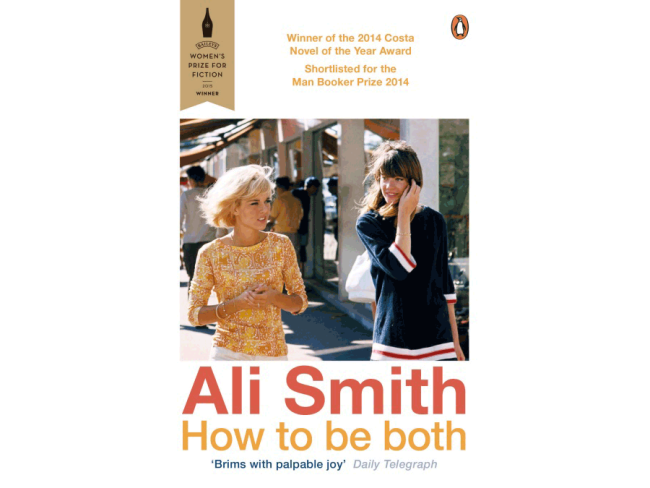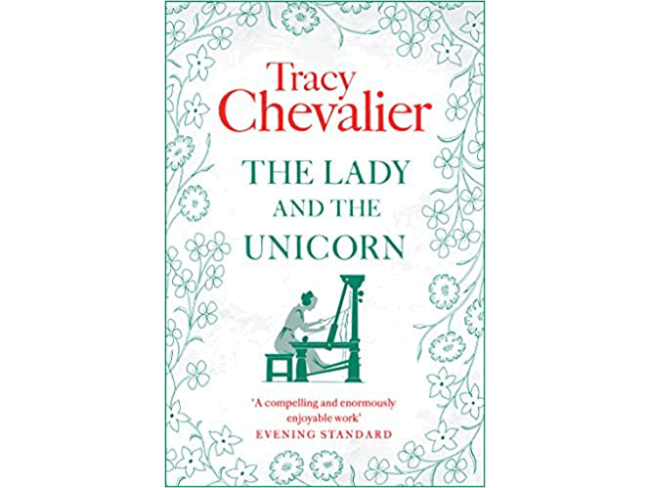10 novels about art you won’t put down
10 novels about art you won’t put down
By Connie Sjödin
Published 10 June 2022
For all your summer reading needs, we’ve picked 10 contemporary novels inspired by art and artists. Escape to the studios of 1970s New York, the courts of 15th-century Paris, or the deathbed of Francis Bacon…
-
An earlier version of this article was published in 2020.
-
-
1. How to be both, Ali Smith (2014)
Scottish author Ali Smith first saw the allegorical Month of March (c.1469) by the 15th-century Italian painter Francesco del Cossa while leafing through an art magazine over breakfast. This chance encounter inspired a trip to Ferrara, Italy to see the fresco and eventually led to Smith’s next novel, How to be Both.In terms of both subject and structure, the reader’s encounter with the novel’s two protagonists – Francesco and a teenage girl, George – is left to chance. Two different versions of the book were published simultaneously, one which begins with George’s story and the other with Francesco’s. For Smith, this also is the power of the fresco: many layers, simultaneously.

-
-
-
2. The Man in the Red Coat, Julian Barnes (2019)
Swathed in a red dressing gown and surrounded by suggestive, crimson drapes, John Singer Sargent RA’s depiction of the pioneering gynecologist Samuel Pozzi, Dr Pozzi at Home was his first work to be exhibited at the RA, in 1882. The painting recently inspired the latest novel by francophile author Julian Barnes, The Man in the Red Coat.Steeped in the luxury and scandal of Belle Epoque Paris and London, Barnes resurrects the charming, philandering Pozzi – known by lovers and clients as “L’amour médecin” (Dr Love) or even “Dr Dieu” (Dr God). A cast of aesthetes and aristocrats revolves around the doctor, including Count Robert de Montesquiou, Prince de Polignac, Sarah Bernhardt, Oscar Wilde, Henry James and Sargent himself.

-
-
-
3. What I Loved, Siri Hustvedt (2003)
For critics across the board, What I Loved clearly teems with the intelligence of its author, American writer Siri Hustvedt. Beginning in the New York art world in the 1970s, the novel explores the friendship between art historian Leo Hertzberg and artist Bill Wechsler, whose artwork Leo discovers in a SoHo gallery. Hustvedt channels Hertzberg’s analytical approach to his subject as she explores the psychological effects of love, grief and hysteria.Hustvedt’s 2014 novel The Blazing World runs a different kind of experiment in which the author confronts misogyny in the art world through fictional, archival accounts of an exasperated artist, whose art only finds success under the names of her male colleagues.

-
-
-
4. The Folding Star, Alan Hollinghurst (1994)
In The Folding Star our protagonist Edwards Manners is a disillusioned language tutor who finds himself washed up in Flanders teaching English. His obsession with beauty, disguised as romantic love, mirrors that of artist Edgar Orst (a cross between Fernand Khnopff and James Ensor). Yet their desire is tied up with loss, and the disappearance of their beloveds repeatedly pulls us back to the sea and the beach in the Belgian town of Ostend.Hollinghurst returns to the melancholy Ostend beach in an article on Léon Spilliaert for RA Magazine, another Belgian artist whose desolate symbolist paintings are the subject of a Royal Academy exhibition.

-
-
-
5. The Lady and the Unicorn, Tracy Chevalier (2004)
Known for her best-selling novel inspired by Johannes Vermeer’s painting, Girl with a Pearl Earring, Tracy Chevalier here turns to the courtly world of late 15th-century Paris and Brussels. Inspired by the eponymous series of six tapestries that now hangs in the Musée national du Moyen Age in Paris, the novel threads themes of desire and symbolism through an imagined story of their creation.Craft is a recurring feature of Chevalier’s work, from quilting in The Last Runaway in 2013 (an art form she has written about for RA Magazine) to embroidery in her latest novel, A Single Thread (2019).

-
-
-
6. The Goldfinch, Donna Tartt (2013)
One of Rembrandt’s most promising students, Carel Fabritius, died in the “Delft Thunderclap” of 1654, a freak gunpowder explosion that also destroyed most of his work. The Goldfinch was one of the dozen or so paintings that survived.In this novel by American author Donna Tartt, the painting, the protagonist Theodore Decker and his mother are caught in another explosion at The Met. His mother dies, but Theodore carries the painting out of the wreckage. As he struggles through life’s different stages, the painting stays with him; a reminder of his mother and “the history of people who have loved beautiful things”.

-
-
-
7. Never Anyone But You, Rupert Thomson (2018)
The true story of 19th-century French artists Claude Cahun and Marcel Moore has long demanded its own novel. Originally born under the names Lucie Schwob and Suzanne Malherbe, the pair met at art school and become lovers. To confuse things, Malerhbe’s widowed mother then married Schwob’s divorced father, and the artists move to Paris. There, they defy gender expectations through their theatre, poetry, photography and sculpture in the Parisian surrealist scene. Finally, they settle in Jersey where they secretly campaign against Nazi occupation.It is a fascinating story of love and resistance, which Rupert Thomson tells with deference to the striking, curious artwork of the partners and collaborators, including photographs of Cahun costumed in different genders.

-
-
-
8. The Death of Francis Bacon, Max Porter (2021)
An imagining of the riotous painter’s mind during the last six days of his life, this short book is described by its author Max Porter as “an attempt to get art history out of the way and let the paintings speak… an attempt to hold catastrophe still so you can get a proper sniff at it.”Through seven explosive written pictures, he sends us reeling through the artist’s debauched memories and inner monologue – where things are “sticky, smells like turpfish, curdled cheese burps, trying to hold this still, just ill red holes in the dark, weeping, but there’s a sense of still-living in the pink…”
A bold and brilliant work by the author of Grief is the Thing with Feathers and Lanny, The Death of Francis Bacon is a short sharp shock full of Porter’s characteristically riotous and joyful prose.

-
-
-
9. Mr Mac and Me, Esther Freud (2014)
In 1914, Charles Rennie Mackintosh — Scottish architect, watercolourist and member of the “Glasgow Four” — moved to the village of Walberswick on the Suffolk coast with his wife, artist Margaret MacDonald. Somewhat conspicuous among the fisherman locals, Mackintosh was suspected of being a German spy and briefly arrested in 1915.Esther Freud pairs the strange story of Mackintosh’s later years with a reflection on mentorship and creativity through the eyes of an artistic 11-year-old, Thomas Maggs.

-
-
-
10. Girl Reading, Katie Ward (2011)
Stand in any gallery and you might find yourself wondering about the story behind a portrait. The thoughts of the sitter, their relationship with the artist — whether one of economy, friendship, or chance — are often left to the viewer to decipher or invent.In her debut novel, Girl Reading, English writer Katie Ward fills in the stories of seven such portraits, all of women reading – from 14th-century Siena to Angelica Kauffman, and even an image created in the near future. The breadth of historical settings and careful research sit together under the wider question, what does it mean to read a portrait of a woman reading?

-













